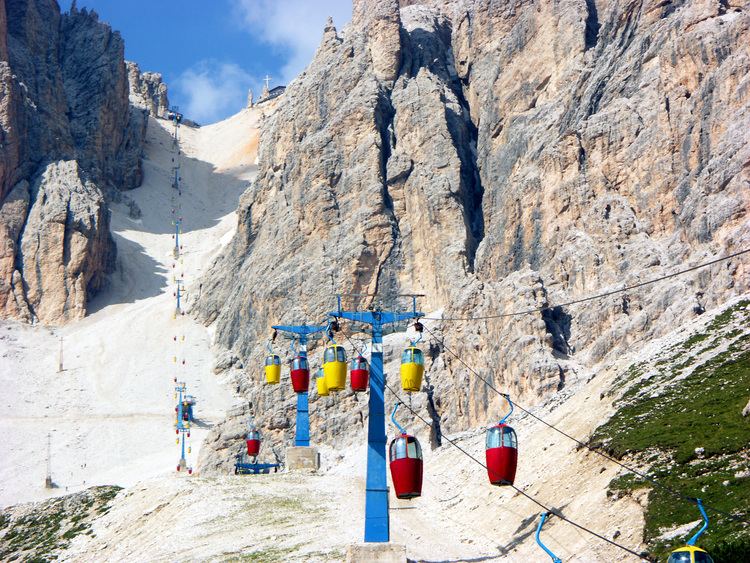Prominence 1,416 m (4,646 ft) Elevation 3,221 m | Province Province of Belluno | |
 | ||
Similar Dolomites, Mount Faloria, Cinque Torri, mont Cristallo, Sorapiss | ||
Cristallo ([kriˈstallo]) is a mountain in the Italian Dolomites, northeast of Cortina d'Ampezzo, in the province of Belluno, Veneto, northern Italy. It is a long, indented ridge with four summits higher than 3,000 metres.
Contents
PeaksEdit
The highest peaks of the Cristallo massif are Monte Cristallo (3,221 m), Piz Popena (3,153 m), Cima di Mezzo (3,154 m), and Cristallino d'Ampezzo (3,008 m). Cima di Mezzo and Cristallino d'Ampezzo can be reached by via ferratas, while Monte Cristallo and Piz Popena both require climbing skills.
First climbsEdit
GeologyEdit
Cristallo is largely formed from the Upper Triassic dolomitic rock Dolomia principale. The mountain was formed during Cretaceous, as well as the rest of the Dolomites, due to the collision between the African and European continents.
AccessEdit
A cable lift system starts from Rio Gere in Val Begontina, first a lift to Rifugio Son Forca at the upper end of Val Padeon. The gondola lift up to Forcella Staunies (2919 m), close to Rifugio G. Lorenzi (2.932 m), was built for the Winter Olympics in Cortina in 1956.
The Dolomite Highway number 3 goes through the eastern part of the massif.
Via ferratasEdit
The two via ferratas VF Ivano Dibona and VF Marino Bianchi both start from the top of the cable car at Forcella Staunies. VF Marino Bianchi can be followed to the peak Cima di Mezzo.
VF Ivano Dibona follows the Zurlon-ridge. It is a historical route used in World War I, and later restored and made safe for tourists. At the beginning is the longest via ferrata suspension bridge in the Dolomites, the 27 metre long Ponte Cristallo.
The via ferrata VF Renato de Pol can be used for access from the western side of the Cristallo massif.
Winter sportsEdit
Cristallo is one of the major skiing areas in the surroundings of Cortina.
Cabins (rifugi) and restaurantsEdit
Some of the cabins and restaurants available are the Rifugio Son Forca at 2,235 m; Capanna Guido Lorenzi at 3,003 m (Auronzo di Cadore); Ristorante Rio Gere at 1,680 m; Ristorante Lago Scin at 1,336 m; Ristorante Staulin at 1,370 m; Ristorante Son Zuogo at 1,800 m.
HistoryEdit
During the World War I there was considerable military activity in the mountain. The front lines between Italian and Austrian troops went through the mountains. Remains of ladders and barracks are still found today, and transport lines (ferratas) have been restored.
Popular cultureEdit
In 1993 the film Cliffhanger was shot on and around the bridge on the Zurlon-ridge, as well as some of the other peaks in the area.
